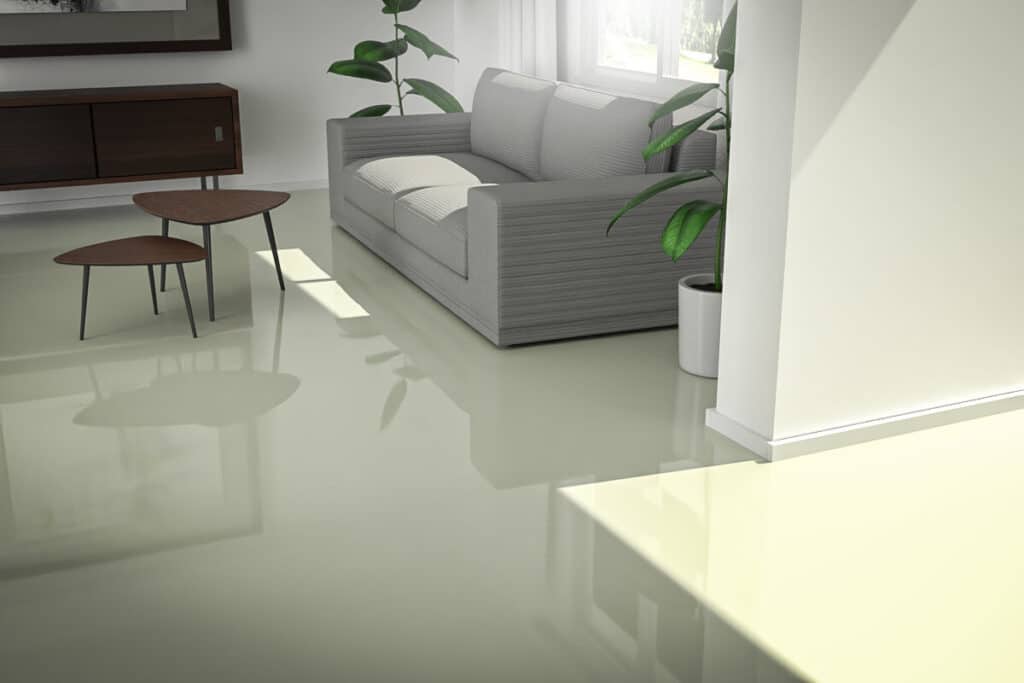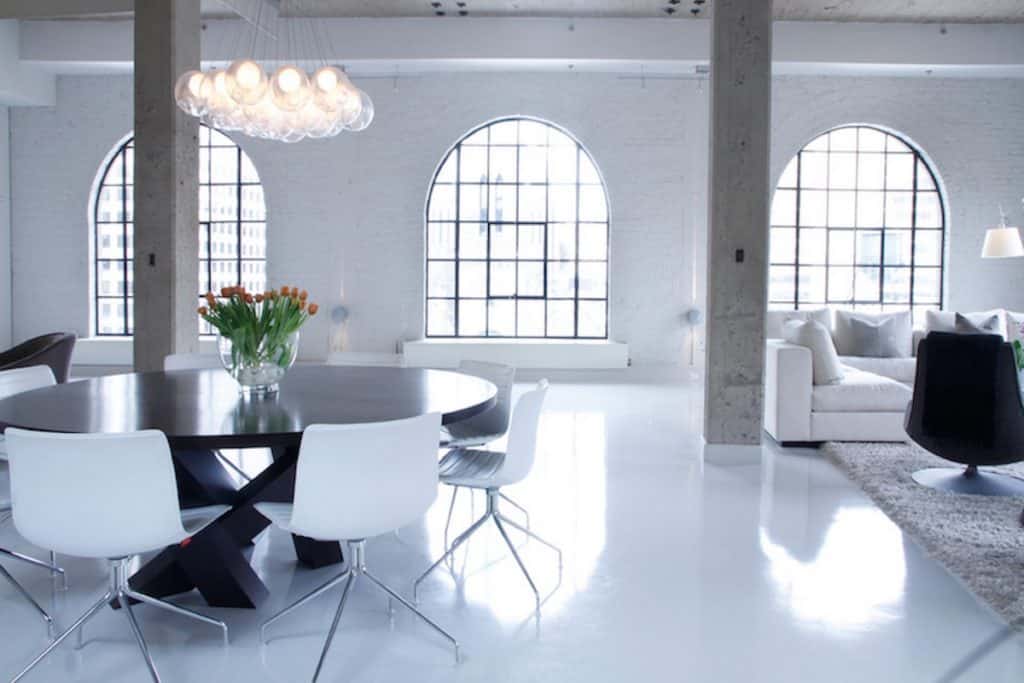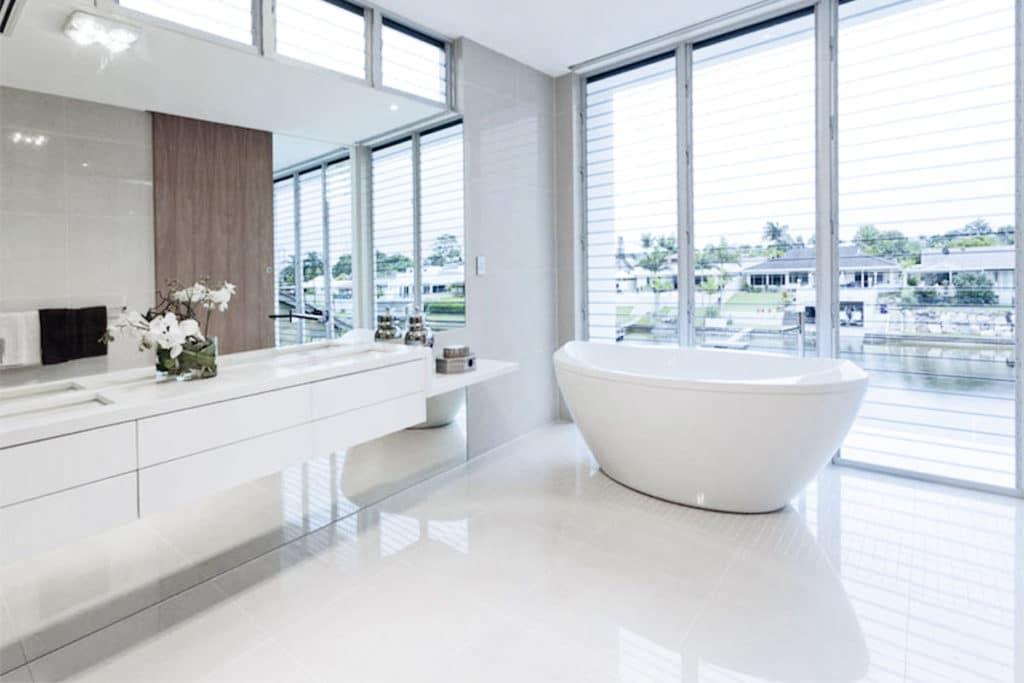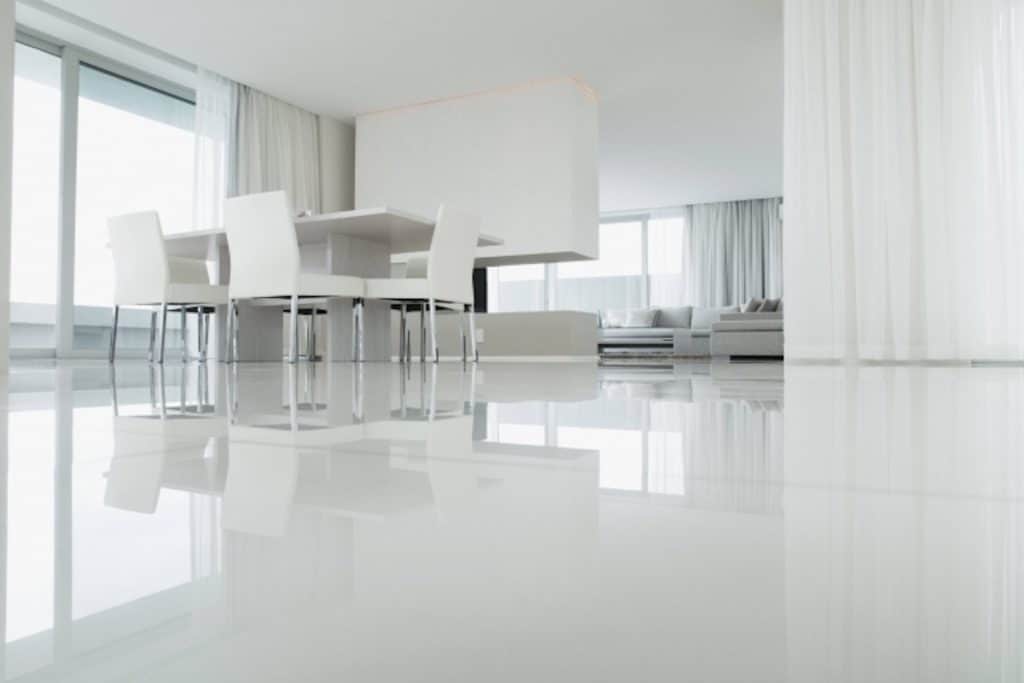Jointless floors have a variety of advantages and are easy to produce with epoxy resin by EPODEX. Seamless, easy to clean, durable, and cost-effective, epoxy resin floors are extremely popular in interior design trends. Gift your home with timeless elegance…
This step-by-step guide will teach you how to remodel your floor with EPODEX products.
Seamless Flooring: Advantages & Properties
A jointless floor creates a shiny high-gloss surface that can significantly increase the brightness of interior areas. This harmonious look creates a sense of calmness throughout your home making furniture, artwork, & decor pop out.
You can lay the jointless floor in one colour or in several colours or patterns. The resin can be dyed in any colour and can also be spiced up with metallic pigments, flakes, or small decorative elements. If at some point in time you want to revamp the floor, simply apply a new layer of epoxy resin in a different colour on top of it.
A jointless synthetic resin floor is practical for families with children or pets. Our epoxy resin is free of adhesives, solvents, and VOCs. This means that the cured floor is emission-free and does not harmful one´s health. An epoxy resin floor can be thoroughly cleaned and is ultra-robust against mechanical stress or leaking liquids.

What You Need:
- EPODEX ECO System (see quantity calculator)
- Fine Dust Mask
- Masking Tape
- Spiked Soles
- Spiked Ventilation Roller
Optional
- Colour Pigments, Flakes, Quartz Sand or similar product
How-To Guide
Preparation of the substrate
Start by cleaning the floor. The subfloor must be dry and dust-free before installation. Fill any unevenness, holes, and cracks before you start priming. After thorough preparations tape all edges of the floor with masking tape. It is highly recommended to wear nail soles during the application of the epoxy resin and during any touch-up work to avoid leaving marks. Wear a breathing mask and old clothes or work clothes like a disposable overall to protect yourself.
Step 2
The Primer
To close all floor pores and reduce material loss, we recommend priming the floor with a thin layer of epoxy resin of 0.2-0.3cm. Mix together the required amount for the first thin layer and stir the two components slowly for about 3 minutes. Then spread the resin on the floor with the paint roller. The best results are achieved by painting the floor in a crosswise motion, as this closes all pores in the floor. Work quickly taking the pot life into account. Allow the primer to completely harden before applying the main coat.
Step 3
The Coating
When the curing time has completed, simply mix the epoxy resin for the main coating. The metallic colours are supplied as pigment powder in sachets. The contents of the bag are then mixed into the resin-hardener mixture. You can determine the amount of resin and thus influence the colour intensity of the result. Thoroughly mix all the components together for 3 minutes. Now you can pour the resin onto the primed surface. Then spread it with a paint roller or squeegee. When pre-coating we recommend a layer thickness of 1.5 mm. At room temperatures below 15°C, you should now go over the freshly poured resin with a spiked deaerator. This will prevent the resin from poorly deaerating and prevent bubbles from forming. Let the layer harden.
If you want to cover your floor with quartz sand, synthetic fibres or flakes, continue with this layer. Mix the silica sand or fibres into the resin according to the exact quantity and then spread it over the floor with a squeegee. If you are using flakes, spread them on the damp pre-coating, wait for the curing time to elapse and then apply another layer of epoxy resin.
Step 4
Remove Masking Material
Now remove all adhesive tapes after processing. Leave the freshly poured floor with nail soles so that n marks are left on the surface. Then let the floor coating completely harden before loading the floor again.



